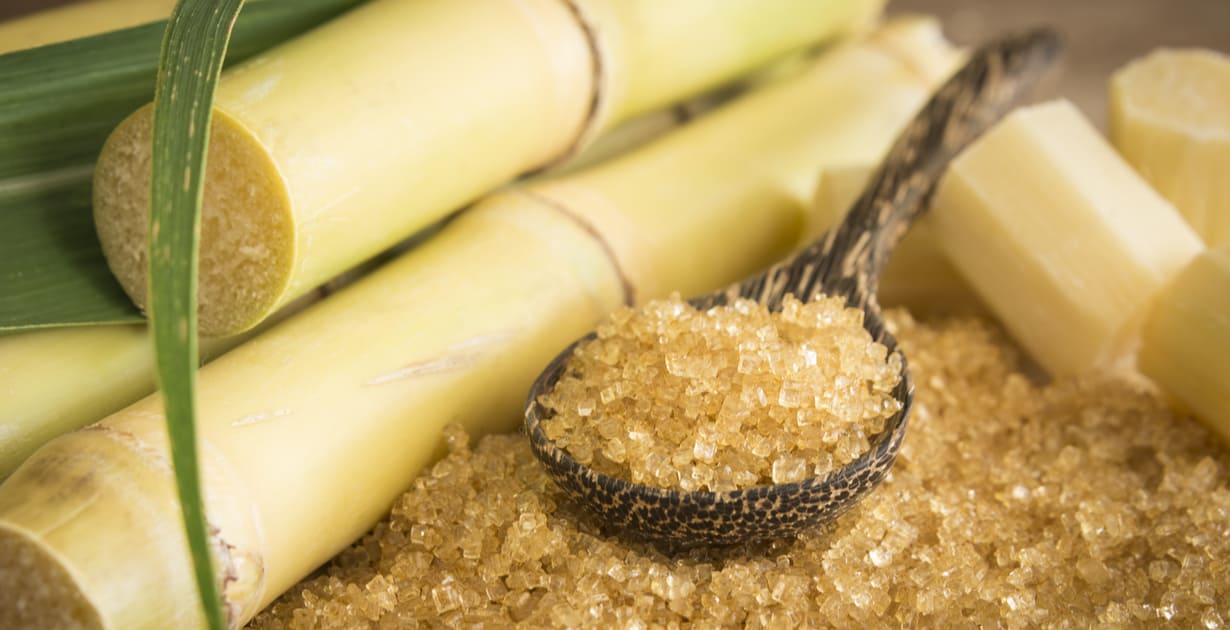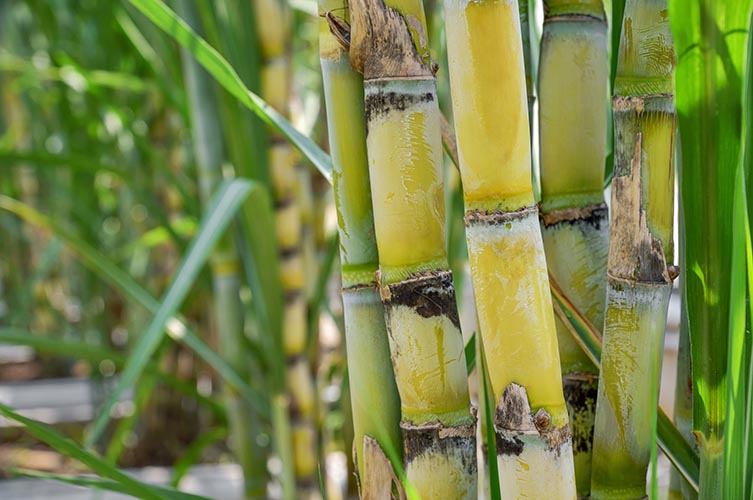Everything About Sugar Canes: What Are Sugar Canes Utilized For and Their Role in International Agriculture?
Sugar walking canes act as a keystone of global farming, largely identified for their function in sugar production. They likewise add to the creation of byproducts like molasses and ethanol. These elements not just support numerous markets yet likewise impact financial security in country areas. However, the farming of sugar walking canes deals with substantial ecological challenges. Comprehending their diverse role triggers additional expedition into their farming methods and sustainability initiatives.
The Agricultural Process of Sugar Walking Stick Farming
Although sugar walking cane farming may differ by region, the essential farming procedure remains regular. The initial step entails selecting high-yielding varieties ideal for local climates. Prep work of the soil is necessary, typically needing husbandry and the addition of plant foods to boost fertility. Growing typically takes place during the rainy season, with farmers utilizing either entire stalks or cuttings to develop new crops.As the plants expand, they need diligent care, including weed control, pest monitoring, and watering, depending upon the environmental conditions. Farmers check the sugar walking cane's development cycle, which usually spans 10 to 24 months, before collecting. Collecting is labor-intensive, frequently conducted by hand or with specialized equipment, ensuring marginal damages to the stalks. Following harvest, the walking stick is moved to processing centers. This careful farming procedure not only sustains local economies yet additionally plays a substantial duty in international farming techniques, adding to food and power products.
Sugar Production: From Walking Cane to Crystal
The journey of sugar production begins the minute fresh harvested sugar cane comes to processing centers. The first step entails washing and slicing the walking cane to prepare it for removal. Utilizing high-pressure rollers, the juice is removed from the crushed walking cane, leading to a sweet fluid called sugarcane juice. This juice undergoes information, where pollutants are removed through the addition of lime and heat.Next, the made clear juice is concentrated by steaming it to develop a thick syrup. This syrup is then crystallized by cooling down, allowing sugar crystals to create. The crystallized sugar is divided from the staying syrup, referred to as molasses, via centrifugation.Finally, the sugar crystals are washed and dried out, causing the familiar granulated sugar (What Are Sugar Canes Used For). This procedure changes raw sugar walking cane right into a product that is integral to numerous cooking and commercial applications, highlighting the significance of sugar in worldwide farming
Biofuels and Sugar Canes: A Sustainable Future
As the world progressively looks for sustainable energy services, sugar walking canes have actually become a promising source for biofuels. The biomass originated from sugar walking sticks can be exchanged ethanol, a renewable fuel alternative that considerably lowers greenhouse gas emissions compared to nonrenewable fuel sources. This procedure not only supplies a cleaner energy resource but additionally promotes energy self-reliance for lots of countries.In enhancement, sugar walking stick cultivation supports rural economic situations by producing tasks in both farming and biofuel manufacturing industries. Using sugar canes for biofuel production also urges agricultural diversity, which can boost soil health and wellness and reduce dependency on solitary plants. Furthermore, the by-products of sugar walking stick processing can be utilized for electrical power generation, additionally adding to a sustainable power cycle. As countries endeavor to meet eco-friendly energy targets, sugar walking sticks are poised to play an essential function in forming a much more lasting future in the biofuel landscape.

The Duty of Sugar Canes in Beverage Production
Sugar canes play a substantial role in beverage manufacturing, working as a primary active ingredient in rum and adding to the sweet taste of lots of soft drinks. In addition, their natural juices are made use of in different beverages, enhancing taste and allure. This adaptability emphasizes the importance of sugar walking sticks in the global beverage market.
Sugar Walking Cane in Rum
Rum production is intricately linked to the farming of sugar walking cane, a necessary plant that provides the necessary fermentable sugars needed for fermentation. This procedure starts with the removal of juice from gathered sugar walking sticks, which is then either fermented directly or refined right into molasses. Yeast is contributed to transform the sugars into alcohol, resulting in a varied array of rum designs, from light to dark ranges. The geographical area where the sugar walking stick is grown significantly affects the flavor account of the rum, with elements such as soil kind and environment having fun essential roles. Nations like Barbados, Jamaica, and Cuba are renowned for their rum production, showing the historical and social value of sugar walking cane within the international drink industry.
Soft Drinks Sweetener Resource

Natural Juice Manufacturing Uses
In addition to its significant duty in soda production, sugar cane is additionally critical in the natural juice sector. The juice extracted from sugar cane, referred to as cane juice, is celebrated for its all-natural sweetness and one-of-a-kind flavor profile. This juice is generally eaten fresh in numerous regions, especially in tropical nations, where it is enjoyed as a renewing drink. Furthermore, walking cane juice serves as a base ingredient in a variety of all-natural fruit juices and smoothies, enhancing both preference and nutritional worth. Its natural residential properties make it an attractive alternative to sweetening agents, interesting health-conscious customers. Generally, sugar cane's flexibility in juice manufacturing underscores its relevance in modern drink offerings worldwide.
Innovations in Sugar Walking Stick Byproducts
Developments in sugar walking stick byproducts are paving the way for sustainable remedies in various markets. Biofuels originated from sugar walking stick provide an alternate power resource, while advancements in lasting product packaging are decreasing reliance on standard products. These growths highlight the flexibility and capacity of sugar walking cane beyond its primary usage in drink production.
Biofuels From Sugar Walking Cane
How can the directory byproducts of sugar walking cane add to sustainable energy services? The conversion of sugar cane right into biofuels offers a promising method for eco-friendly power. By making use of the fibrous deposit, recognized as bagasse, producers can produce bioethanol via fermentation procedures. This bioethanol can serve as a sustainable alternative to fossil fuels, reducing greenhouse gas emissions and dependence on non-renewable sources. Additionally, molasses, one more result, can be fermented to produce biofuels, taking full advantage of source efficiency. The energy generated from sugar cane not only provides a cleaner fuel source however also improves the total economic feasibility of sugar production. By integrating biofuel manufacturing into their operations, sugar cane markets can play a vital role in progressing lasting power solutions internationally.
Lasting Product Packaging Solutions
Lasting product packaging options are progressively being established from sugar walking stick byproducts, showcasing the adaptability of this farming staple. Innovations such as naturally degradable plastics stemmed from bagasse, the fibrous residue left after juice removal, are gaining grip. These products provide an environment-friendly choice to typical plastics, lowering reliance on nonrenewable fuel sources and lowering carbon footprints. In addition, sugar cane-based product packaging is compostable, breaking down naturally without hurting the environment. Business are now exploring these options to line up with consumer demand for sustainability. As recognition of plastic pollution expands, the fostering of sugar cane-derived product packaging is expected to rise, placing sugar walking sticks as a crucial gamer in the shift to greener product packaging options in various markets.
Economic Influence of Sugar Walking Stick Farming

Sugar walking stick farming has deep roots in several economic climates, its financial impact prolongs much past farming production. This crop functions as a substantial income source for countless farmers worldwide, specifically in developing nations where agriculture is a primary livelihood. Sugar walking cane adds to regional economic climates through job creation in farming, processing, and harvesting. The industry likewise stimulates development in associated markets such as transportation, devices manufacturing, and food processing.Furthermore, sugar cane is an essential gamer in worldwide trade, influencing international markets and costs. Nations that generate sugar cane frequently depend on exports to enhance their financial stability. The spin-offs of sugar walking cane, such as ethanol and molasses, expand revenue streams for farmers and include value to the farming sector. In general, the economic ramifications of sugar walking stick farming are profound, affecting not only farmers but additionally whole areas and national economic situations.
Ecological Considerations in Sugar Cane Growing
While sugar walking stick farming plays an essential function in lots of economic climates, it likewise increases considerable environmental problems that can not be forgotten. The comprehensive use fertilizers and pesticides in sugar walking cane growing typically brings about dirt destruction and water air pollution. Runoff from these chemicals can pollute close-by water bodies, harming aquatic ecological communities. In addition, the monoculture techniques common in sugar walking cane farming reduce biodiversity, making communities more at risk to bugs and diseases.Deforestation is see one more crucial problem, as land is usually removed to make method for sugar plantations, causing environment loss for wild animals and increased carbon exhausts. The high water intake required for sugar walking stick watering can stress local water sources, especially in arid regions. As international need for sugar remains to rise, addressing these ecological difficulties ends up being necessary to guarantee sustainable techniques in sugar walking cane farming.
Regularly Asked Questions
What Are the Nutritional Benefits of Sugar Walking Cane?
The dietary benefits of sugar walking stick primarily include its high carbohydrate content, supplying energy. In addition, it includes vitamins, minerals, and anti-oxidants that might sustain total health, though moderation is crucial because of its sugar material.
How Does Sugar Walking Stick Affect Resident Ecosystems?
Sugar cane farming can significantly affect local communities by changing land use, affecting biodiversity, and needing significant water resources. In addition, it may bring about here dirt deterioration and chemical drainage, interfering with bordering environments and wildlife populaces.
What Is the Background of Sugar Walking Stick Farming?

Are There Alternatives to Sugar Cane for Sugar Production?
Alternatives to sugar walking cane for sugar production consist of sugar beetroots, corn, and various tropical plants like sorghum and agave (What Are Sugar Canes Used For). These plants supply diverse resources of sweetness, each with distinctive growing needs and environmental influences
Just How Do Weather Patterns Impact Sugar Walking Stick Returns?
Climate patterns considerably influence sugar walking cane returns with temperature level variations, rains amounts, and seasonal cycles. Dry spell or excessive rainfall can impede growth, while excellent problems boost photosynthesis, inevitably impacting the amount and high quality of the harvest. The journey of sugar manufacturing starts the minute freshly gathered sugar cane gets here at refining centers. The taken shape sugar is divided from the continuing to be syrup, recognized as molasses, via centrifugation.Finally, the sugar crystals are washed and dried, resulting in the familiar granulated sugar. Rum manufacturing is delicately linked to the growing of sugar walking stick, an essential plant that offers the needed fermentable sugars required for fermentation. In addition, the monoculture techniques prevalent in sugar walking stick farming minimize biodiversity, making ecological communities a lot more at risk to parasites and diseases.Deforestation is an additional critical problem, as land is often removed to make way for sugar vineyards, leading to habitat loss for wild animals and raised carbon exhausts. Alternatives to sugar walking stick for sugar manufacturing consist of sugar beetroots, corn, and numerous tropical plants like sorghum and agave.